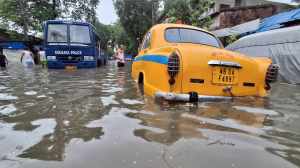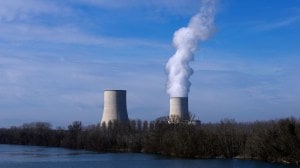Nikhil Kamath asks top cops if there’s a solution to Bengaluru’s traffic woes, here’s what they say
Commissioner of Police B Dayananda and Joint Commissioner of Police (Traffic) MN Anucheth were the guests in Zerodha co-founder Nikhil Kamath's podcast.
 Mumbai is one of the most congested cities in the world (Representational Image)
Mumbai is one of the most congested cities in the world (Representational Image)In a recent episode of his podcast WTF is, Zerodha co-founder Nikhil Kamath sat down with two of Bengaluru’s senior-most police officers, Commissioner of Police B Dayananda and Joint Commissioner of Police (Traffic) MN Anucheth, to address the city’s most persistent problem: its notorious traffic.
Bengaluru, often dubbed India’s Silicon Valley, has come under fire for its traffic congestion. In 2024, it was ranked the third most congested city in the world and one of only two Indian cities to feature in the list of the world’s ten worst traffic-hit cities, according to the traffic index released by TomTom, a Dutch location technology specialist.
“As someone from Bangalore, I’ve been a bit bothered by how much flak we get, especially about traffic. So I set out to see if the criticism is fair, and what’s actually being done about it,” Kamath wrote in the episode’s YouTube description. During the conversation, he added, “I am from Bangalore. I hate all the hate that is coming for Bangalore.”
Sitting across the table from the city’s top cops, Kamath asked, “I’m from Bangalore, as Bangalorean as anybody can be. Wherever I go and tell good things about Bangalore, people tell me, ’traffic, traffic, traffic.’ What is the problem? What is the solution? Is there a solution?”
Responding to this, M N Anucheth traced the root of the issue back to the IT boom. “The thing with Bengaluru has been that post-2000, after the IT boom, there has been a significant explosive growth and the infrastructure has not commensurately grown with vehicles or the human population,” he explained.
He also shared some striking numbers. “Bangalore has 1.23 crore registered vehicles for a population of 1.5 crore; that’s 872 vehicles per 1,000 people, more than Mumbai or Delhi! Hyderabad is comparable. It’s at about 750. But Bangalore is very high. So, we have a 1.5 crore population with a 1.23 crore vehicle population. So, with the kind of explosive growth… So the compounded annual growth rate of vehicles is 8 per cent, right? We doubled between 2013 and 2023. It was 56 lakh, it became 1.12 crore. So, if you see that kind of growth rate, infrastructure will never be enough,” he said in the podcast.
Anucheth also highlighted how the city lacked robust public transport alternatives before the Metro came in. “The only public transport facilities before the Metro came in were the BMTC buses. Unlike other cities like Kolkata, you had the trams. In Delhi, you had the Metro,” he said.
Further, Kamath shared a personal anecdote that many Bengalureans might relate to. “Near my house on Bannerghatta Road, Metro construction started, I don’t know, ten years ago. It’s still going on,” he said.
Photos


Sep 23: Latest News
- 01
- 02
- 03
- 04
- 05





























